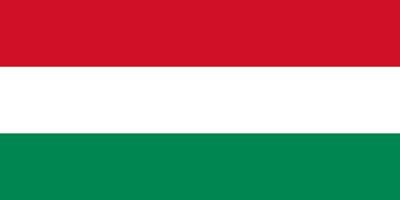PART 3.
TOPIC 1. Disperse Systems. Methods of Expressing Solution Concentration.
Solutions are of great importance for living organisms. Complex physicochemical processes in the bodies of humans, animals, and plants occur in solutions. Important physiological fluids are solutions: blood plasma, lymph, gastric juice, etc.
Many medicinal preparations are used in the form of liquid dosage forms, for example, physiological saline solution (0.9% NaCl solution), which matches blood plasma in composition and is injected into the blood for certain diseases. In medicine, a 5% alcoholic iodine solution is widely used for treating wounds, abrasions, and surgical fields. For some allergic diseases, adults are prescribed a solution with a mass fraction of calcium chloride CaCl2 of 10%.
Knowledge about the properties of solutions and methods of expressing solution concentrations is necessary for mastering the pharmacist profession. A pharmacist must be able to prepare dosage forms according to prescriptions and healthcare institution requirements, including liquid dosage forms. For this, it is necessary to perform the required calculations and know the methods of preparing solutions with various types of concentration.
Tasks for independent work:
-
Lugol's solution, used in ENT practice for lubricating the mucous membrane of the oral cavity and throat, contains 17 ml of water, 1 g of iodine, and 2 g of potassium iodide. Calculate the mass fractions of iodine and potassium iodide in Lugol's solution.
-
For gum lubrication, a solution is prepared from 5 ml of 30% H2O2 solution and 15 ml of distilled water. Calculate the mass fraction of H2O2 in the resulting solution. (Assume the solution density is 1 g/ml)
-
In medical practice, aqueous solutions of potassium permanganate of different concentrations are used. Calculate the mass of KMnO4 and the volume of water needed to prepare 100 g of a 3% potassium permanganate solution.
-
What masses of salt and water are required to prepare 500 g of 0.9% NaCl solution? Such a solution is called physiological saline and is widely used in medical practice.
-
A 5% alcoholic iodine solution is used in medicine to treat wounds, abrasions, and surgical fields. What volume of 5% alcoholic iodine solution can be prepared from 10 g of crystalline iodine? The solution density is 0.950 g/ml.
-
In case of alkali burns, the affected skin area is washed with water for 10-15 minutes, then neutralized with a solution containing 2% acetic acid by mass fraction. What mass of acetic acid concentrate with a 60% acid mass fraction is needed to prepare 600 g of a 2% solution?
-
For skin acid burns, a 3% sodium bicarbonate solution is used for neutralization. How many grams of a solution containing 25% of this salt and water are needed to prepare 100 g of a 3% solution?
-
For some allergic diseases, adults are prescribed a 10% calcium chloride CaCl2 solution, children – a 5% CaCl2 solution. Calculate the masses of 10% and 2% CaCl2 solutions required to prepare 400 g of a 5% CaCl2 solution.
-
From 400 g of a 50% sulfuric acid solution, 100 g of water was evaporated. What is the mass fraction of H2SO4 in the remaining solution?
-
To 500 ml of 30% nitric acid solution (density 1.20 g/ml), 1 liter of water was added. What is the mass fraction of HNO3 in the resulting solution?
-
To 100 ml of 96% sulfuric acid (density 1.84 g/ml), 400 ml of water was added. What is the mass fraction of H2SO4 in the resulting solution?
-
25 g of copper sulfate pentahydrate CuSO4∙5H2O is dissolved in 200 g of water. What is the concentration of copper (II) sulfate in the resulting solution? Copper sulfate has astringent and antiseptic properties.
-
Determine the mass fraction of Na2SO4 in a solution obtained by dissolving 84 g of Na2SO4∙10H2O in 300 g of water. The hydrate Na2SO4∙10H2O – Glauber's salt – is used in medicine as a laxative and can be used as an antidote for poisoning by barium and lead salts.
-
Prepare 100 g of 5% MgSO4 solution from the hydrate MgSO4∙7H2O. The salt is widely used in medicine in injections as an antispasmodic, anticonvulsant, and analgesic, and internally as a laxative.
-
How many grams of 30% and 3% hydrogen peroxide solutions are needed to prepare 540 g of a 6% solution? Hydrogen peroxide solution has antiseptic properties.
Recommended Offer Form for Individuals
Regulations on the Pedagogical Council of Secondary School No. 2, Makaryev
Banking Details and Document Copying Fees of Central Suburban Passenger Company
Banking and Legal Details of the Krasnoyarsk Regional State Center of Folk Art (GTSNT) for Paid Services and Government-Subsidized Contracts

 Deutsch
Deutsch
 Francais
Francais
 Nederlands
Nederlands
 Svenska
Svenska
 Norsk
Norsk
 Dansk
Dansk
 Suomi
Suomi
 Espanol
Espanol
 Italiano
Italiano
 Portugues
Portugues
 Magyar
Magyar
 Polski
Polski
 Cestina
Cestina
 Русский
Русский